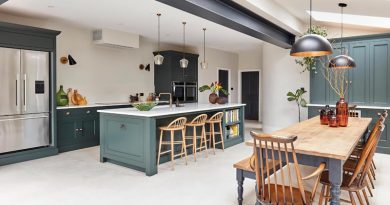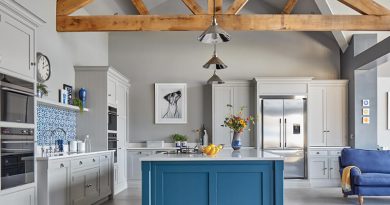Creating a Seamless Flow Between Kitchen and Dining Room
The kitchen and dining room are not only functional spaces in our homes but also areas where we gather, socialize, and enjoy meals together. Creating a seamless flow between these two spaces can enhance the overall aesthetic appeal and functionality of your home. In this article, we will explore various tips and ideas to achieve a harmonious connection between the kitchen and dining room, ensuring a delightful and cohesive experience for both residents and guests.
1. Open Concept Design
One of the most effective ways to establish a seamless flow between the kitchen and dining room is through an open concept design. By removing walls or creating wide openings, you can visually connect these spaces, allowing natural light to flow freely and creating a sense of spaciousness. This design approach encourages interaction between the cook and guests, making it easier to entertain and engage in conversations while preparing meals.
2. Consistent Color Scheme
To maintain a cohesive and visually appealing connection between the kitchen and dining room, it is important to establish a consistent color scheme. Choose complementary or matching colors that blend seamlessly between the two spaces. This can be achieved through coordinating wall paint, cabinetry finishes, flooring materials, or even shared accent colors in decor and accessories. A unified color palette creates a sense of continuity and harmony, enhancing the overall flow between the two areas.
3. Cohesive Flooring
Flooring plays a significant role in establishing a seamless transition between the kitchen and dining room. Consider using the same or similar flooring materials in both spaces to create a cohesive visual flow. Whether it’s hardwood, tile, or laminate, maintaining consistency in the flooring choice helps connect the areas and avoids any abrupt visual changes. Additionally, using area rugs or runners can define specific zones within the space while still maintaining a cohesive overall look.
4. Transitional Decor Elements
Introducing transitional decor elements can help bridge the gap between the kitchen and dining room. Consider incorporating design elements that are shared between the two spaces, such as similar lighting fixtures, artwork themes, or furniture styles. This can be achieved through pendant lights that hang over the kitchen island and dining table, coordinating artwork or wall decor, or using furniture pieces that seamlessly blend the two areas together.
5. Functional Layout
A well-thought-out and functional layout is essential for a seamless flow between the kitchen and dining room. Arrange furniture and appliances in a way that facilitates easy movement and interaction. Position the dining table in proximity to the kitchen for convenient serving and clearing. Ensure that there is ample space for traffic flow and that doorways or passages between the two areas are unobstructed. This allows for a smooth transition between cooking, dining, and entertaining.
By implementing these tips and ideas, you can create a seamless flow between your kitchen and dining room, fostering a cohesive and inviting atmosphere. Remember to consider your personal preferences and the overall style of your home when making design choices. With careful attention to detail and a focus on creating a harmonious connection, you can transform these spaces into the heart of your home where both functionality and aesthetics are perfectly balanced.




